One of the most persistently obnoxious things that pet dogs do is beg for food. And they often do it whether we want to share with them or not.
Once your dog figures out that some of our great-smelling noms could end up in her tummy, her begging strategies commence, and they usually don’t stop until the meal is complete and all the food is gone.
Our dogs want our food, and they are willing to beg ceaselessly if it means they might get to eat even a tiny bite of it. Sometimes it’s cute, but for lots of dog caretakers and visiting dinner guests, it’s annoying.
Read on to learn how to keep your pooch from ruining every meal you consume with her shameless begging. We explain how you can use patience and consistent training to teach your dog to stop begging for your food in a way that works for her – and for you!
How to Stop a Dog from Begging: Key Takeaways
- Dogs beg for food for one of two primary reasons. Either they’re malnourished and in need of more food, or they’ve simply found that by begging, they get to enjoy delicious morsels of human food (which undoubtedly taste better than their own food).
- Fortunately, there are ways to train your dog to stop begging. As with many other training solutions, you’ll need to teach your dog to replace the undesirable behavior (begging) with a more desirable one (such as waiting patiently on her mat).
- If you lack the time or patience to employ training solutions, you can just use management solutions to stop the problem. This means doing things like keeping your pet away from the dinner table at mealtimes by using gates, or feeding your dog in another location at the same time you’re eating.
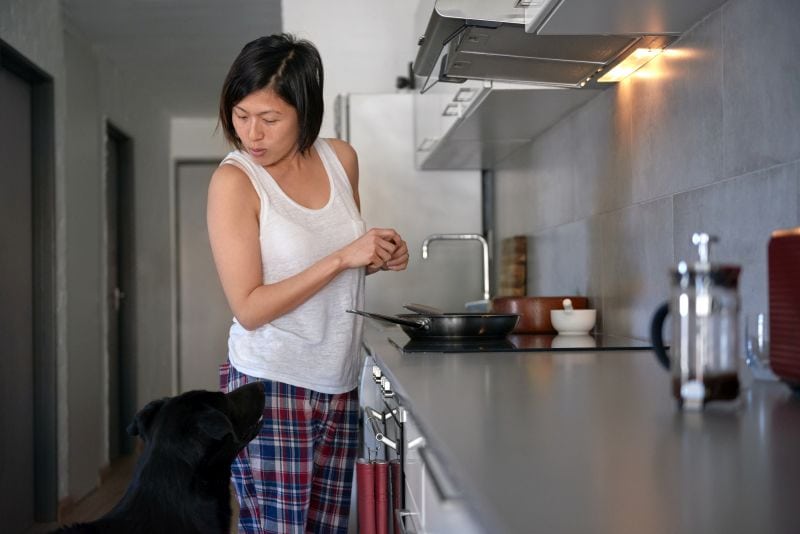
Dogs Beg for Food: It’s Just What They Do
All dog lovers can relate to this experience:
You’ve prepared a delicious meal and are sitting down to enjoy it, but you can’t shake the feeling that you’re being… watched. The tip of your dog’s nose is just visible under the table, and you can hear and feel her gently panting hot breath on your shin. Sure enough, there’s the predictable drool puddle forming on your foot.
Your dog wants to enjoy the meal with you, and she seems at least as excited as you are about how good it smells.
She’s pulling out the big guns. Huge eyes. An occasional piteous whine. Resting her head gently on your knee, then leaning on it if you don’t look at her quickly enough. Pawing your foot every so often.
As your meal draws to a close, she ramps up the offensive – her concern increases as the number of tidbits on your plate steadily decreases. She barks occasionally. She does some tricks she knows. The drool puddle is reaching epic proportions.
When you finish your meal, you wonder at all the theatrics as you toss a bit of your food in her direction. It disappears into her mouth and you wonder if she even tastes it before it vanishes down her throat. Could that tiny morsel of your meal be worth all that effort to your pooch?
You could ask her, but you don’t need to.
You know she’ll be right there, under the table, ready to try it all again the next time you sit down to eat.
Why Do Dogs Beg for Food?
Dogs have a long history of loving people food — this isn’t a new thing. But there are a few different reasons they do.
And, as with many dog behaviors, you have to understand the reasons dogs do the things they do to have any chance of changing them. We’ll explain the two most common reasons dogs beg below.
Reason #1: Dogs Beg Because it Works
It’s probable that the modern dog’s wolf-like ancestor discovered that befriending and helping humans for a share of our meal was well worth the effort.
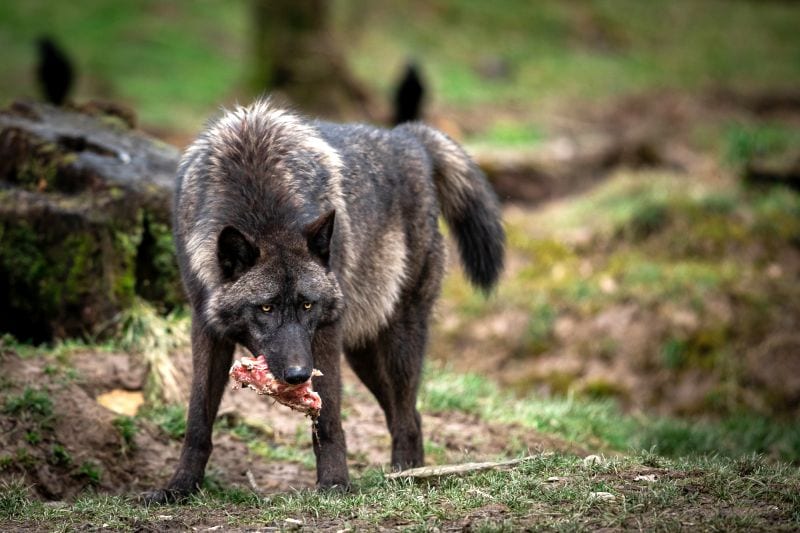
Modern dogs may not offer as much hunting or guarding assistance as those ancient dogs did, but they would sure like to keep sharing our meals!
Our dogs’ frequent begging for food is a great indicator that they think even the tiniest taste is worth the effort, and that is one of the primary reasons dogs beg – it works.
Those early dogs were not quite as good at begging as our modern dogs are — today’s pets have got it down pat.
The huge eyes, the whining, the gentle (or not-so-gentle) pawing — these things are all geared to get our attention and encourage us to fork over some snacks.
Many of the begging behaviors we see our pet dogs do are slightly adjusted behaviors that puppies perform when their parents are around, which is how puppies ask for attention and food.
Reason #2: Dogs Beg Because They’re Malnourished
One other reason your dog might beg for food is that she may not be getting enough calories or nutrition from her current diet.
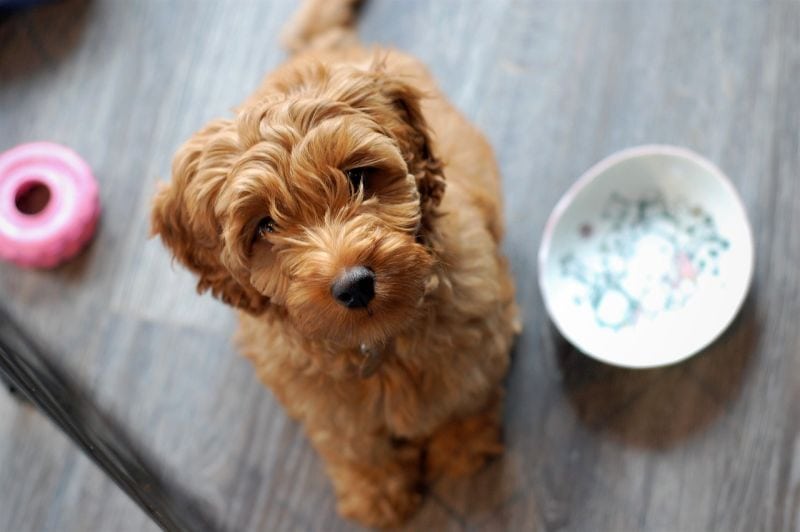
However, if you and your dog live in the United States, this reason is not likely, as more than half of the dogs in the U.S. are overweight.
If you are feeding your dog a commercial chow with an AAFCO statement on it, and she’s getting the correct number of cups of that food each day based on her weight (there’s a place on the food container that outlines this information), she’s probably consuming exactly what she needs.
If you are still concerned that your dog may be undernourished, have a chat with your vet. Some diseases cause imbalances in dogs’ blood sugar or affect their ability to digest food properly, and those body changes can cause your dog to feel hungry, which can sometimes increase her begging behaviors.
The Many Faces of Begging Dogs
What do common dog begging behaviors look and sound like? So glad you asked! Below, we’ll break down a few of the most common doggo begging behaviors.
- Staring – Those huge puppy eyes and flat ears are the universal dog body language for “Please?!”
- Whining – This can be a small, occasional sound or a piercing, persistent one.
- Drooling – Pavlov was right, dogs drool when they think food time could happen at any moment.
- Pawing – Touching you with her paw wherever she can reach you.
- Nudging – Touching or pushing at you with her nose.
- Licking — This can quickly turn into a mini-bath for you, especially if your dog just doesn’t want to stop doing it.
- Panting – If panting suddenly starts to happen at meal time, this behavior is probably caused by nerves or excitement, and not because your dog is too warm.
- Barking – Demand barking is intended to get your attention, and it usually works. It is often rewarded by at least a glance from nearby people.
- Placing her head on your lap or foot – Another way to grab your attention, this behavior is often followed by pushing or leaning on you heavily if initially ignored.
- Offering trained behaviors without being cued – Dogs who do this know that performing trained behaviors are worth a reward, so dogs may offer to do tricks they know when they want a reward.
These begging behaviors can range from subtle and infrequent to exuberant and consistent. If a behavior your dog did in the past was effective at getting her attention or food, she will often try it again to see if it still works.
Beware of Your Blind Spot: Owners May Stop Noticing Begging
Since you live with your dog day-to-day, you may not really notice all the begging antics she exhibits in an attempt to garner your attention while you’re cooking or eating.
But, whenever your friends or family show up, they can’t help but notice the flamboyant and noisy begging behaviors your dog exhibits. And many people feel uncomfortable about being the focus of a dog’s begging behavior.
Sometimes, the begging causes guests to give the resident dog a morsel of their meal in an attempt to please her. But when they do, they often find that the dog’s efforts are multiplied as she tries to acquire even more tasty treats from her new best friend.
The guests may not know how to get your pooch to stop bothering them. Nor may they have the nerve to mention the issue to their host — especially if it is being ignored by everyone else.
But no matter how your guests handle it, it is your responsibility to be mindful of your dog’s begging behaviors and do what you can do end them.
If your guests have been complaining about your dog’s behavior during meals and you’re ready to put a stop to the shenanigans, the first thing to do is acknowledge the problem behaviors. Then, you can focus on changing them.
How to Train Your Dog to Stop Begging for Food: A Step-by-Step Plan
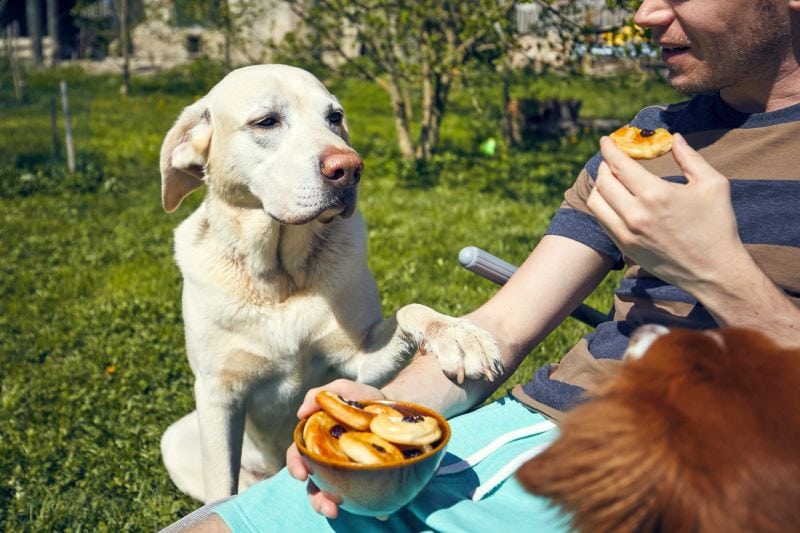
The first thing to understand when trying to address your dog’s begging problem is that dogs repeat behaviors that are successful.
This statement drives the practices employed with positive reinforcement training techniques, which have proven themselves to be an excellent way to teach dogs.
In this particular situation, your dog’s begging is reinforced – specifically, through attention and food scraps from the humans eating at the table or preparing dinner.
And unfortunately, this means your dog will continue to repeat the begging behaviors as long as they continue to prove to be successful.
This means that if anyone at any point feeds your dog from the table or while cooking, she will continue to beg, because that behavior is still paying off.
Step 1: Ignore the Begging
If your dog is consistently ignored when she begs, the begging behavior will gradually diminish and disappear.
This means that none of the begging behaviors that you’d like to say goodbye to can elicit any response from anyone. No looks, no petting, and certainly no snacks.
Any amount of attention can cause a setback in this training technique.
Your dog will probably not take this lack of response quietly. On the contrary, a behavior pattern known as an “extinction burst” will probably happen at least once as you ignore your dog’s begging.
In an extinction burst, whatever begging behaviors your dog has done in the past will be exhibited in full force as she attempts to get foodstuffs in her belly. It’s worked before, so she doubles down, assuming that with enough persistence her go-to begging behaviors will work once again.
But they will pass.
Be. Patient.
If you can ride this behavior wave until it subsides, the begging will disappear. And once it goes, it will be gone for good.
Unless, that is, someone starts feeding your dog from the table again.
Ignoring your dog when she begs has to be a permanent household rule for every person who comes through the door if you want the begging behavior to disappear forever.
Step 2: Replace Begging With an Alternative Behavior
It can take quite a while for a behavior with a long reinforcement history to be extinguished, especially if your dog is still getting reinforced for begging occasionally.
Many families have at least one person who doesn’t mind the begging or who likes it when the dog pays so much attention to them. Thus, many households containing a furry begger choose to train an incompatible behavior as well as ignore the begging.
This type of behavior cannot be performed at the same time as begging by your dog, so it can replace the begging with another behavior that you like more. Your dog will like it too, since she will be able to earn some consistent reinforcement for doing it.
My favorite replacement behavior to teach dogs who beg for food is “Go To Your Mat,” or some other “Place” skill. These skills cue your dog to go to a designated spot and stay there.
We’ve covered mat training in detail before, but we’ll run down the basics below!
- Pick a place mat (which could be a bathmat, towel, additional dog bed, or anything similar) and decide where it will go.
- Use treats to help convince your dog to put all four feet on the mat or bed, then click and reward her for success.
- Cue “Down,” (have her lay down) and click and reward for success.
- Give her a few treats for staying in place before using a release word (like “Ok” or “Free”), then encourage her to get up and move.
- Practice encouraging your dog to go back to her bed and lay down there for short amounts of time. Gradually add duration by slowing down how quickly you give her treats for staying on her mat.
- Add a verbal cue when she can easily head over to her mat and stay for a short while during practice. Say the cue “Place” once before you gesture toward the mat, and keep giving a click and treat for arriving and laying down. Say her release word before she gets up.
- Add distance to the initial “Place” cue by taking a step or two away from your dog’s mat, and give her a cue to go onto her mat. Click and treat for success. Say her release word before she gets up. Add distance gradually, with plenty of practice at each distance. If she stops understanding what you’re asking for, get a bit closer to the mat and practice more at that distance.
- Add distance to how far away you can be while she stays on her mat. Do this gradually, and keep returning to her side to give her treats while she stays put. It is much harder for her to keep doing this while you move out of sight, so add that gradually if you need to. Don’t forget to release her before she gets up.
Teaching your dog to go to her mat on cue is a great way to give her something else to do that she can still get rewards for. Best of all, it will send her away from her naughty begging zone while you’re preparing or enjoying meals.
Not to mention, it’s also a great calming behavior to add to your dog’s repertoire!
Just make sure you start your place training when it’s not mealtime so your dog can practice going to her bed and staying there without tasty temptations making things tougher on her than need be.
Once she’s mastered the basics, you can start expecting her to stay on her mat while you enjoy dinner.
Helpful Training Tips to Keep In Mind to Stop Begging
Now that we’ve covered the training basics for eliminating begging behavior, we want to share two helpful tips to make the process go smoothly.
Work on Your Aim
Treat placement (where your dog receives and eats her treat) is a pretty important consideration for place training. You want your dog to feel like her hard work is being rewarded as she stays in a good spot during the meal.
So, be sure to toss her treats accurately, so they land near her and allow her to enjoy her reward without having to move.
Treats that bounce away, thereby forcing your dog to get up to eat them, will be counterproductive. They’ll encourage her to stop doing the right thing so she could get and eat her treat.
Give Your Dog Fun, Safe Things to Chew
To help make your dog’s reinforcement more consistent and less likely to cause her to get up before you release her, give her a smart toy like a stuffed KONG or a long-lasting chew treat.
This also means that you don’t have to pause your meal multiple times to give your pooch some success snacks, though the occasional tiny training treat will help encourage her to continue doing just that.
Duration cues like “Place” are promises; if you want her to be consistent, you can’t forget about your pooch.
You should reinforce her successful “place” command with treats, and you’ve got to give her a release cue when you’re ready for her to leave her spot.
An Alternative to Training: Management Solutions
What if changing your dog’s begging behavior with training can’t happen before a planned event, or you know your guests just won’t be able to resist your adorable dog’s practiced begging, even if you ask them not to feed her?
Don’t worry — you can address the problem via canine management. A few of the things you may want to try include:
- Feeding your dog a meal before you start cooking or eating may help decrease the amount of begging behaviors you see, since she won’t be as hungry after eating her own meal.
- Feeding your dog a meal while you prepare dinner or sit down to eat with your dog safely behind the closed door of a room or crate is a nice way to manage and prevent begging during your meal.
- Using doors or dog gates, you can prevent your dog from having access to the table or kitchen. This is a great way to manage begging behavior, and it’s also helpful to do while your dog is learning to stay on her place during food prep or meals – even if she gets up to see if any of your food is for her, she can’t access the dining room to beg or search for dropped food on the floor.
- Using a tie down is a great way to limit your dog’s freedom of movement to a small area near where the tie down is located. It is also a great way to help your dog stay near or on her place. However, you want to make sure you can supervise your dog while she is attached to a tie down to make sure she doesn’t chew or get tangled in it.

Dog Begging FAQs
Many people have questions about the topic of begging behavior, so we have tried to answer some of the most common ones below.
What if I still want to share some of my food with my dog occasionally?
Most of the foods we eat are OK for us to share with our dogs, but if you are trying to discourage or eliminate begging, do not give the food to your dog when or where she is actively begging.
Giving her the food in another location (when she is already near the other location — not begging next to you), or in her bowl after a meal has ended, are great solutions that can help your dog learn that begging is no longer effective.
What if my dog begs for food in the kitchen while I’m cooking?
Many dogs love to be kitchen helpers, but if they’re dangerously underfoot, you may want to decide on a plan for training and managing where your dog is while you cook.
Teaching “Leave It” is also a great goal, that way you can let your dog know not to eat the food item she’s interested in.
Will telling my dog to go away make her stop begging?
Probably not.
If your dog is soliciting food and attention from you while you eat, giving her any attention at all, even with an angry tone, tells her that you noticed her efforts, and she could be rewarded at any moment.
Consistently ignoring a behavior you don’t like, such as begging, is the best way to get it to stop.
***
Our pet dogs love to enjoy our meals with us, and once we give them good things to do instead of beg annoyingly throughout mealtime, we can enjoy our food near our canine companions much more too!
Does your dog beg for food when you or your guests are eating? What is the most annoying thing they do while they’re begging? What behavior have you taught your dog that gets them to stop begging?
Share your experiences (and any questions you may have) in the comments below!
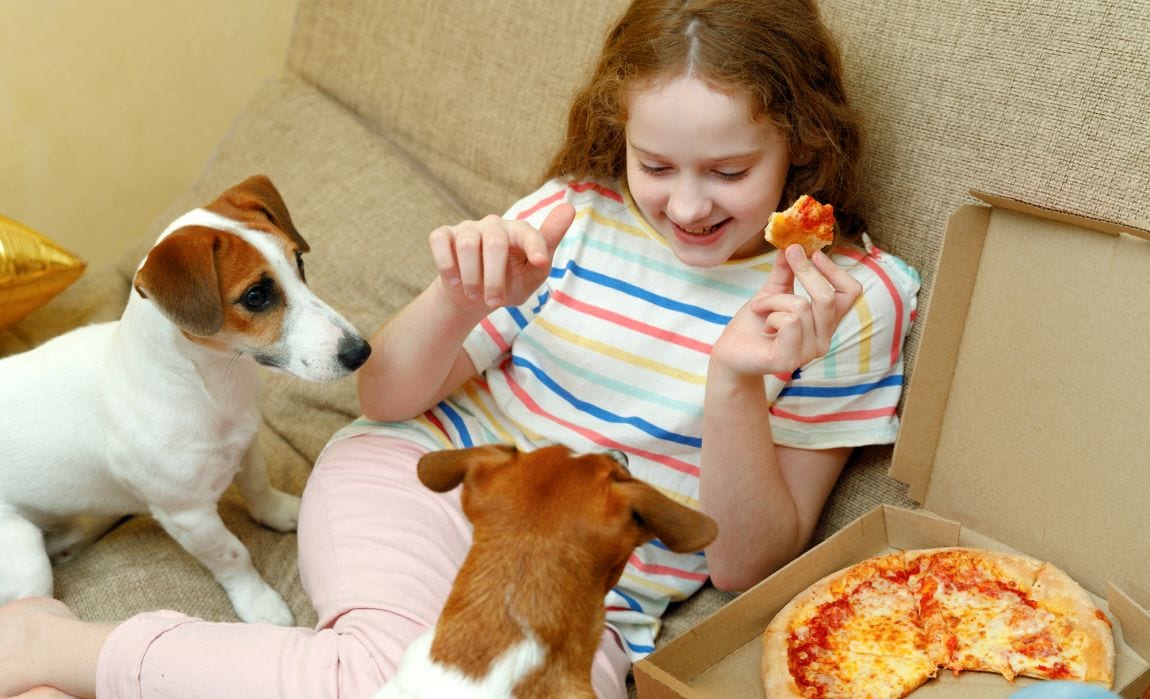

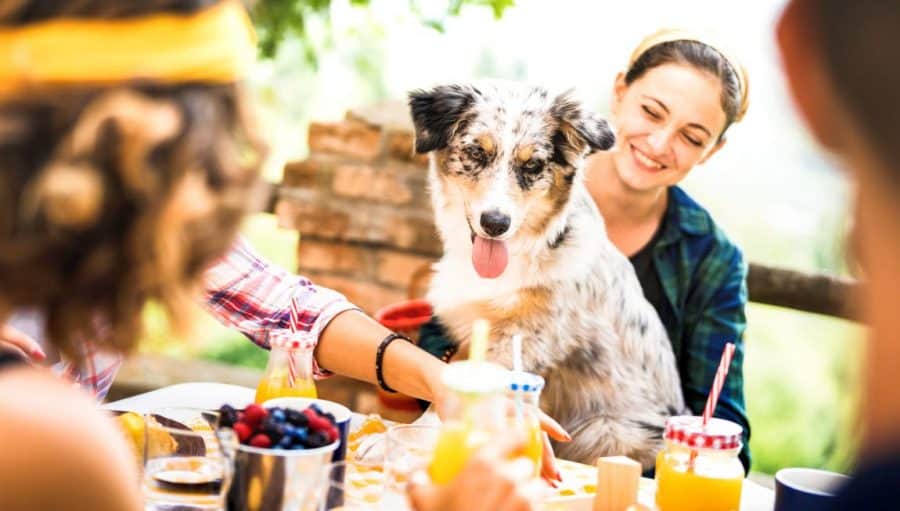


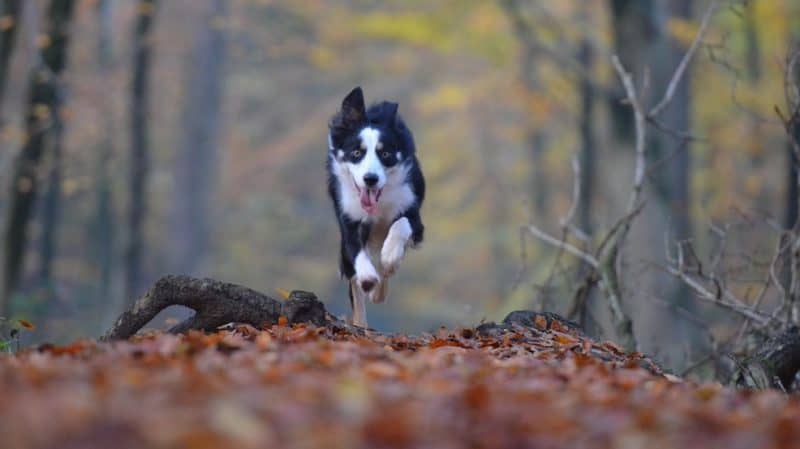
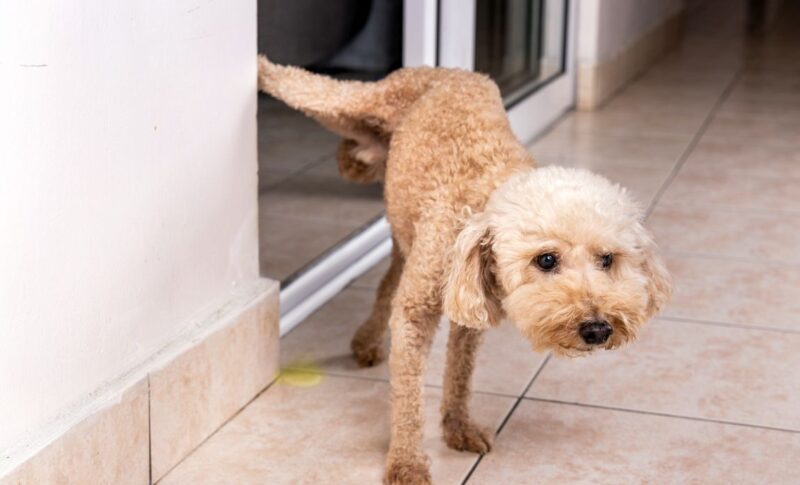
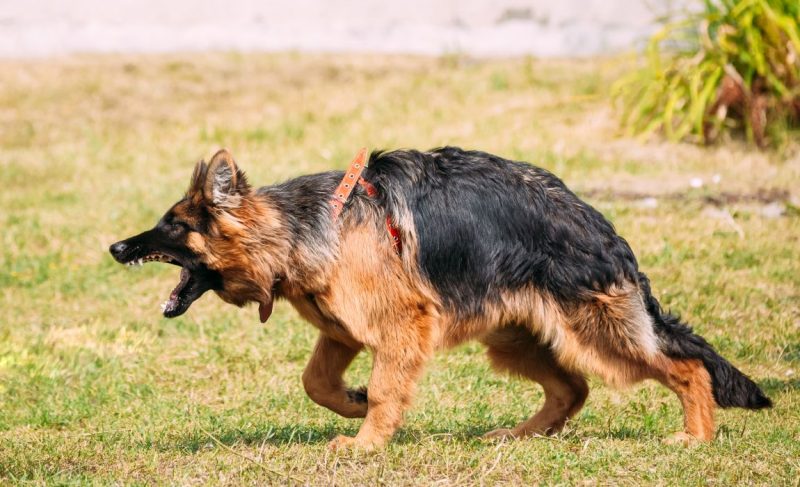
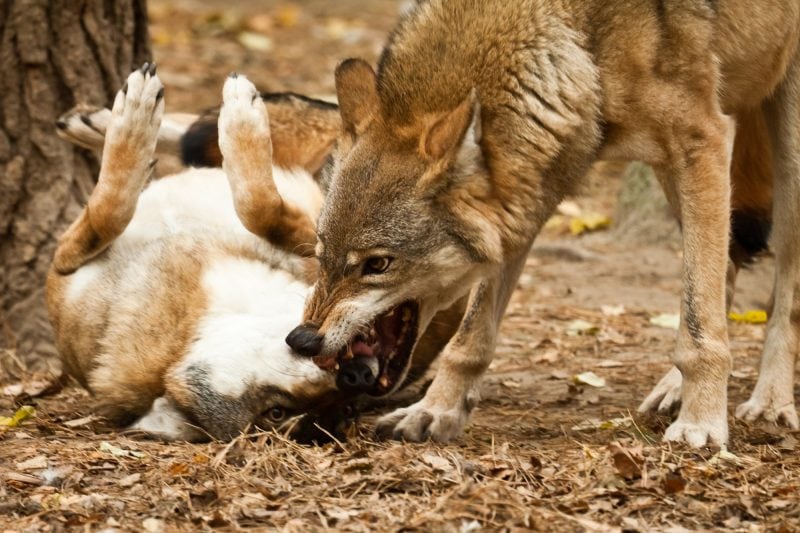
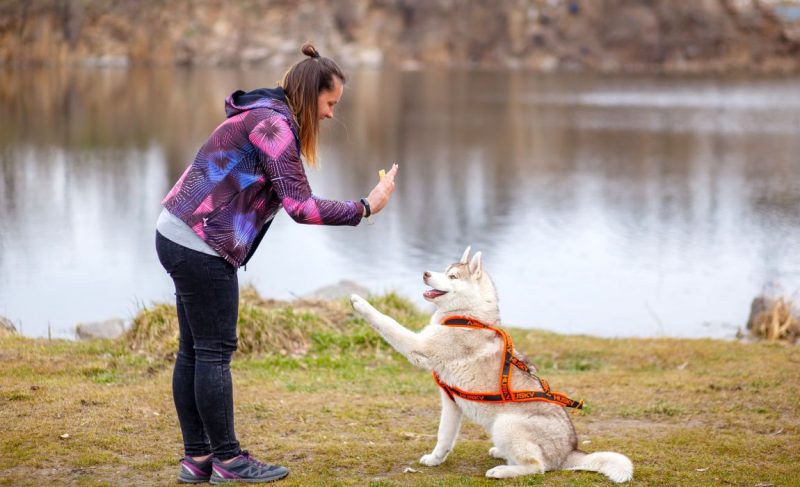
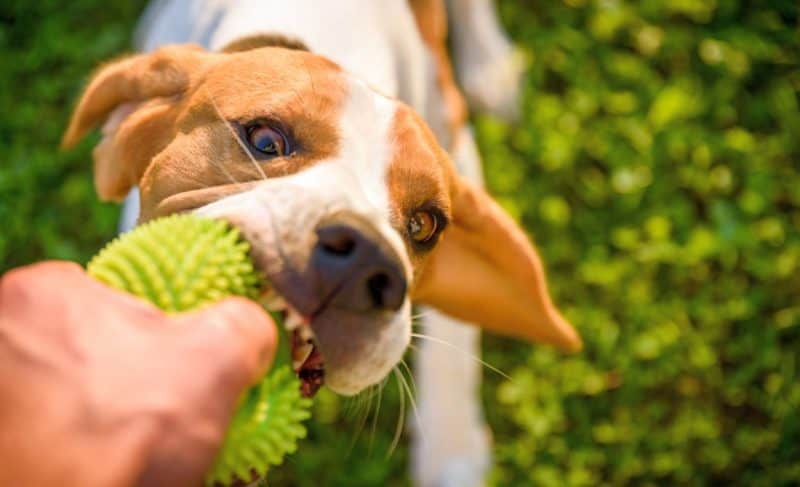
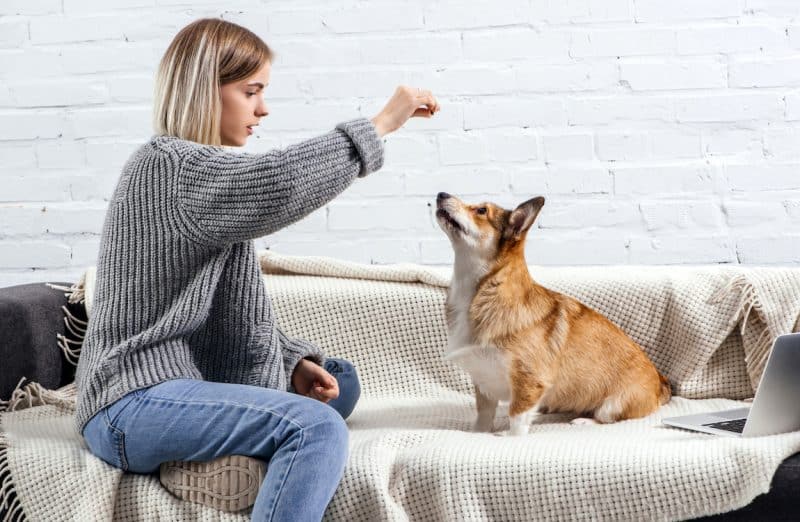

Leave a Comment